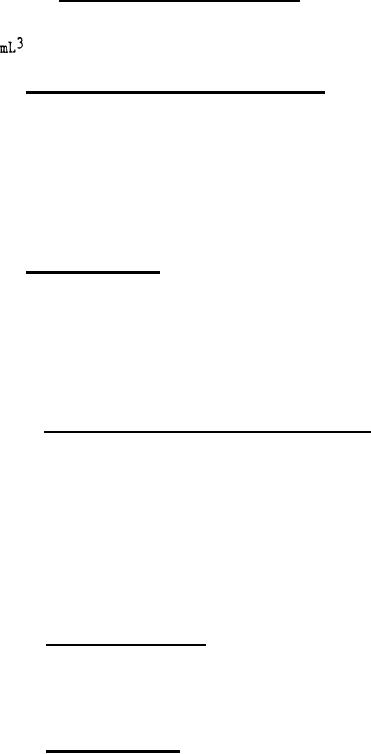 |
|||
|
Page Title:
Exploratory for resonance frequencies |
|
||
| ||||||||||
|
|  MIL-V-24694(SH)
4.7.3.3.2 Increasing pressure leakage. The pressure shall be decreased to
zero, then increased to the minimum reseat pressure. Unless otherwise specified
(see 3.1), leakage at the pressure equivalent to reseat pressure shall not
exceed 1
per minute.
4.7.4 Performance test (maximum setting). The valve shall be adjusted to
the maximum pressure setting of its class (see 3.1) as identified in the appli-
cable specification sheet. Valves adjustable to a range of more than one class
need only be tested at the maximum setting of the highest class. With the valve
set at the the maximum pressure setting, the tests of 4.7.3.1 through 4.7.3.3.2
shall be performed. Any evidence of chatter, surging, or squeal under any test
condition shall be cause for rejection. leakage measurements shall be taken in
the third minute of a 3-minute period. For quality conformance, test time may
be reduced to 1 minute.
4.7.5 Vibration tests. The valve shall be mounted on a resonance-free
fixture for testing. The vibration input accelerometer shall be mounted on the
fixture close to the mounting point of the valve to the fixture. A second
accelerometer shall be mounted directly on the valve for monitoring resonant
frequencies.
Valves need not be pressurized for the tests but shall be mounted
in a test block. If a valve is symmetrical about a principal axis, vibration
testing need only be accomplished along two orthogonal axes, one of which shall
be the principal axis of symmetry.
4.7.5.1 Exploratory for resonance frequencies. Resonant frequencies of the
valve shall be determined by varying the frequency of applied vibration slowly
throughout the range specified in table II. For frequencies from 4 to 33 hertz
(Hz), the table vibratory single amplitude shall be 0.25 .05 millimeter (mm).
Above 33 Hz the table vibratory single amplitude shall be 0.10 + .02 mm. The
change in frequency shall be made in discrete frequency intervals of 1 up to
50 Hz and maintained at each frequency for about 15 seconds. From 50 to 2000 Hz
a logarithmic sweep of at least 10 minutes duration shall be made. As an alter-
native, a logarithirmic sweep from 4 to 2000 Hz back to 4 Hz may be conducted.
The total time of the ascending plus descending sweep shall be not less than
40 minutes.
4.7.5.2 Variable frequency. The valves shall be vibrated from 4 (or lowest
obtainable frequency) to 2000 Hz at the amplitude specified in table II. From 4
to 50 Hz the valves shall be vibrated in descrete frequency intervals of 1 Hz for
1 minute minimum at each frequency. From 50 to 2000 Hz a logarithmic ascending
and descending sweep of not less than 20 minutes total shall be conducted.
4.7.5.3 Resonance dwell. Test valves shall be vibrated along each axis
at the most severe resonant frequencies determined in 4.7.5.1 at the amplitudes
specified in table II. The dwell test time shall be divided equally between the
significant resonant frequencies. If more than four significant resonant
frequencies are found for any one axis, the four most severe resonant frequencies
shall be chosen for the dwell test. Total test time shall be 2 hours for each
axis* If no resonant frequencies are identified the valve shall be tested at
50 Hz
10
|
|
Privacy Statement - Press Release - Copyright Information. - Contact Us |